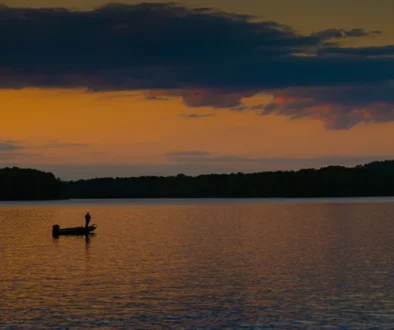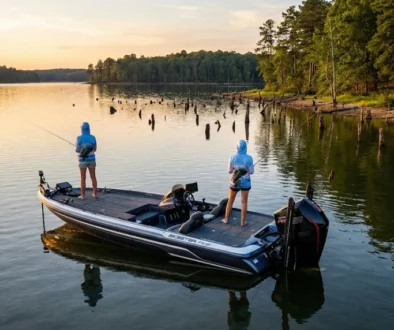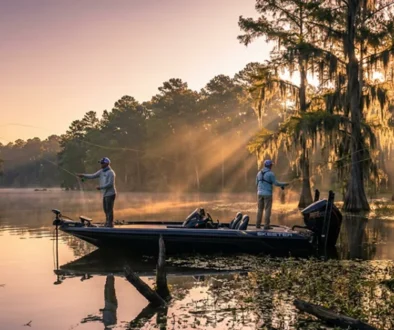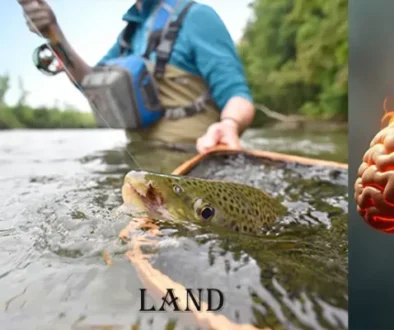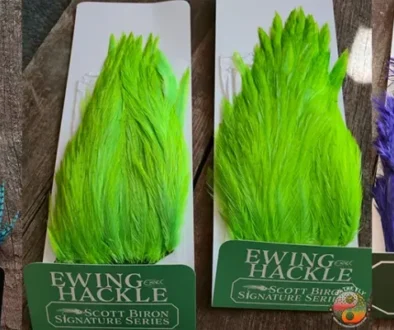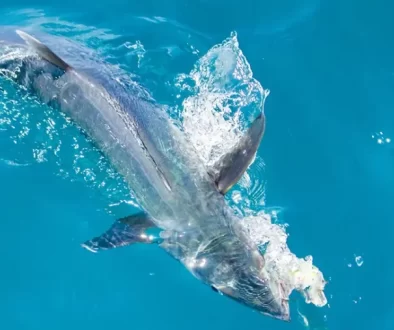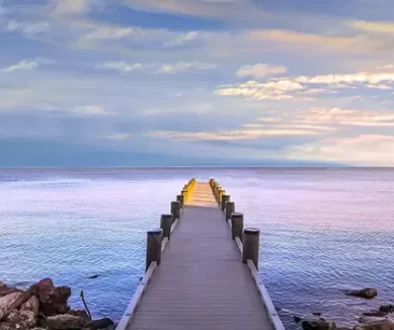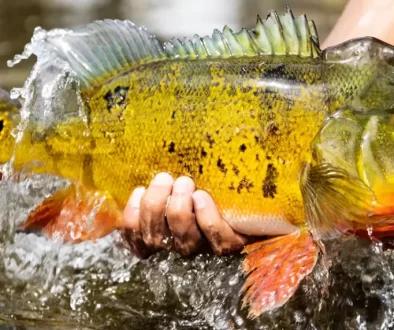Life Cycle of Salmonflies: Where & How to Use Them Fly Fishing
For fly fishermen, few things rival the anticipation of the annual salmon fly hatch. It’s a spectacle that transforms rivers into a feeding frenzy, with trout rising to the surface to feast on these giant, clumsy insects. But to truly maximize your fishing success during this hatch, you’ll need a deeper understanding of the life cycle of salmonflies and where to find them. This isn’t just about showing up at the river with the right fly; it’s about knowing what’s happening beneath the surface and how it affects trout behavior. You’ll learn all about the life cycle of salmonflies and where to fly fish with them.
Many anglers chase the hatch without truly understanding its nuances. That’s like trying to solve a puzzle without all the pieces. I will look into the fascinating world of these giant stoneflies – their life cycle, preferred habitat, and how these factors translate into a rewarding fly fishing experience. And it helps I am just getting back from a 3 day weekend of 100 plus West slope Cutthroats fly fishing Idaho. By the end, you’ll be well-equipped to time your trips, choose the right flies, and land that prized trout during the salmon fly hatch.
Table of Contents
The Salmon Fly: King of the Stoneflies
The salmon fly (Pteronarcys californica) reigns supreme among the stonefly family, boasting an impressive size that can reach up to 3 inches long. These aren’t your average mayflies or caddisflies. Their size alone sends a ripple of excitement through the fly fishing community when they emerge.
Salmon Fly Life Cycle
Imagine spending years underwater before taking flight – that’s the life of a salmon fly. These insects undergo a fascinating life cycle that spans two worlds – the aquatic depths where they spend most of their lives and the brief, magical time they spend as winged adults. Let’s break down each stage:
Egg Stage
It all starts with an egg, thousands of which are deposited by the female salmon fly on the water’s surface. These eggs sink to the bottom and settle among the rocks, ready to embark on their life cycle journey. This stage typically takes place in late spring or early summer.
Nymph Stage
This is where these creatures spend a considerable chunk of their lives – up to four years, in fact. The eggs hatch into nymphs, resembling small, wingless versions of their adult selves. These nymphs inhabit the river bottom, seeking refuge among rocks and submerged debris. Interestingly, the nymphs can be found in various sizes within the same river section, indicative of different age classes.
I always liked Charlie Brooks theory of tying in the round. I have found it very successful when other things weren’t working. I even picked nice browns rolling the right colored woolly buggers across the bottom of a river or stream. Or a Brooks Stone, Bitch Creek, and Montana Nymph. How about a girdle bug? Variegated Black and Brown.
Another great resource and authority is Schwiebert’s Nymphs II. Great old patterns, that are still effect today. But just the beauty of the writing goes with out saying.
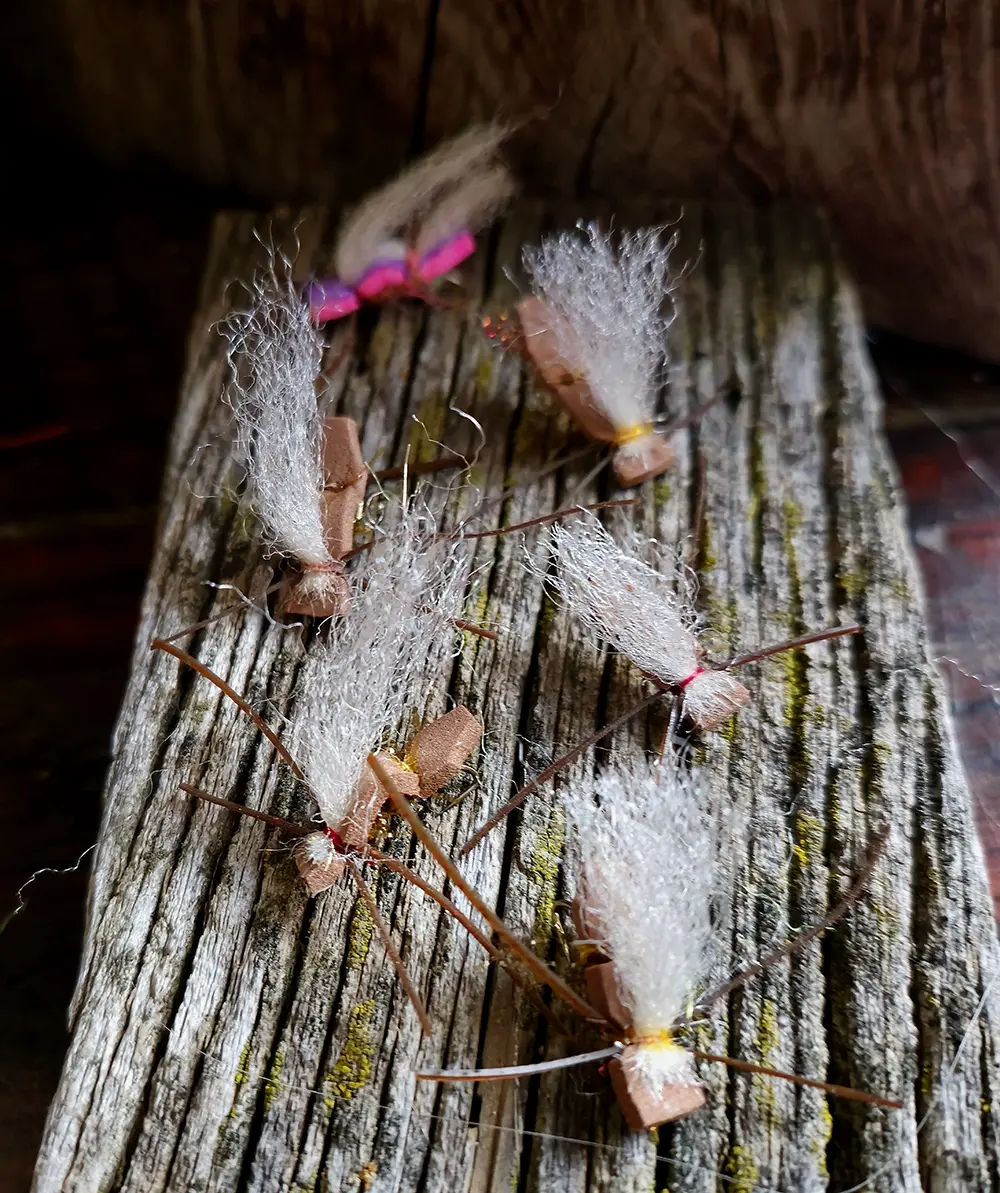
Tidewater Fly Foam Salmon Fly Pattern
With Salmonflies, hoppers and other terrestrials I find myself tying more with foam. I like all the different patterns Tidewater Fly Foam has to offer Mottled. for a tail I have been using Crystallized Flash, the Auburn has worked very well. I think part of the charm is the Gel Core Body Micro Fritz by Semperfli, as a tag. Fl. Chartreuse & Fl. Red. Body is twisted Ice Straggle and Dirty Bug Yarn.
I tie these in a size range from 14’s to 4’s on a 4XL hook. They work all the way into fall.
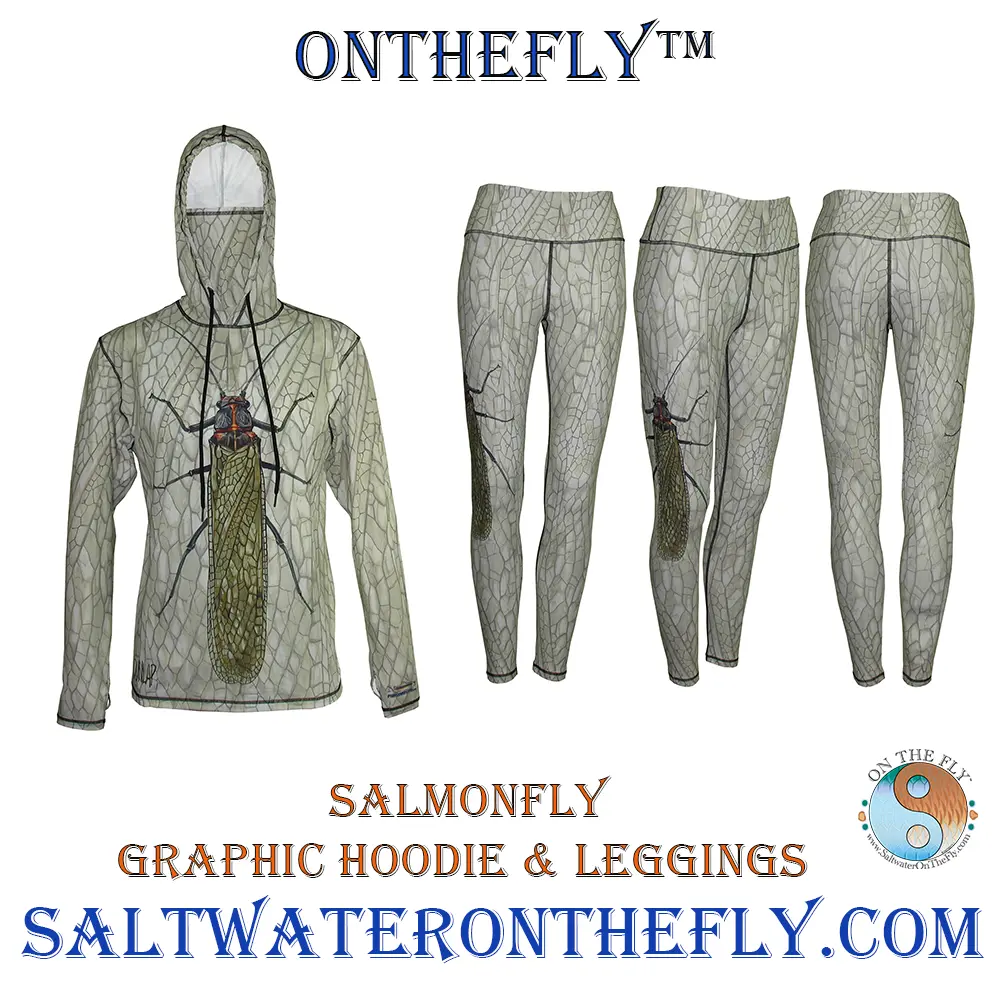
Salmonfly Fly Fishing Hoodie & Leggings
Fly Fishing Apparel in a Salmonfly Graphic Hoodie and Salmon fly Patterned Leggings. Fly Fishing Apparel is a UPF-50 sun protection for a great day outdoors, doing what you love.
Emergence
As the nymphs mature and water temperatures rise, they prepare for a significant transformation. Driven by an ancient instinct, they migrate toward the riverbanks, often in large numbers. This typically occurs in late spring or early summer and coincides with rising air temperatures. This migration often happens at night or early morning, making it less noticeable to the casual observer.
Unless you are a trout.
Adult Stage
Once on land, the nymphs crawl onto rocks, vegetation, or anything along the river bank. They then shed their exoskeletons, emerging as winged adults. This transformation usually occurs during the early morning or evening hours, and is an incredible sight to behold if you’re lucky enough to witness it firsthand. After emergence, they need some time for their wings to dry and harden before they’re ready for the final chapter.
Mating and Egg Deposition
Now able to fly, albeit clumsily, the adult salmon flies have one thing on their minds – reproduction. Males and females will engage in a whirlwind of mating activity, often fluttering high in the trees along the riverbanks. Following this frenzy, females return to the water, depositing their eggs on the surface to restart the cycle. Sadly, this marks the end of their life cycle, typically within a week or two of emerging. They play a vital role in the ecosystem, becoming a nutritious food source for trout, birds, and other wildlife.
Where to Fly Fish During the Salmon Fly Hatch
Knowing the life cycles of salmonfly’s provides a roadmap for anglers to pinpoint prime fishing spots during the hatch. Let’s explore where these insects thrive and how you can target these areas for an unforgettable fly fishing experience.
Fast, Rocky Rivers
It all boils down to water temperature. Salmonflies favor cooler temperatures between 50 and 55 degrees Fahrenheit. Look for fast, freestone rivers in the Western US.
Rivers with great notoriety like the Madison River, Yellowstone River, Rock Creek, in Montana. Upper Rio Grande and Colorado River in Colorado. Though I prefer out of the way streams. If you are good, you can follow the hatch throughout the Rocky Mountain States. It’s quite an Adventure.
- **The Madison River, Montana**: This legendary river flows through breathtaking scenery and is well known for healthy populations of rainbow and brown trout eager to devour salmon flies.
- **The Henry’s Fork, Idaho**: A tributary of the famed Snake River, The Henry’s Fork offers breathtaking beauty and excellent dry fly fishing during the salmon fly hatch.
- **The Deschutes River, Oregon**: This iconic river offers prolific hatches. Anglers flock here each year to experience the excitement as giant salmonflies meet hungry trout.
Tips for a Successful Salmon Fly Fishing Trip
Now that we’ve discussed the life cycle of salmonflies and where to fly fish with them, let’s cover some helpful tips and strategies that can help you have a successful trip. These suggestions might just make your next fishing trip your best one yet.
They are the perfect breeding ground for these insects, offering ample oxygen and hiding places for nymphs to develop.
Identify Preferred Nymph Habitat
Before the hatch, focus on sections with large submerged rocks and boulders, fallen trees, and generally slower-moving water along the edges of faster currents. Remember those nymphs? They love these areas because they offer protection from predators and abundant food sources like decaying leaves and organic matter.

West Slope Cutthroat caught on a salmonfly.
Focus on Banks and Vegetation During Emergence
When the hatch is on, concentrate on areas near the bank with overhanging vegetation, particularly willow trees. Salmon fly nymphs will crawl onto these surfaces to molt, making them easy pickings for trout seeking an effortless meal. Be patient, observe the river, and you’ll likely find areas with higher concentrations of emerging adults, increasing your chances of a successful cast.
Timing Your Trip: Key Indicators of the Salmon Fly Hatch
For many anglers, this is the pinnacle of fly fishing. It’s not just about catching fish but witnessing a natural event that turns the river into a feeding frenzy. But timing is everything with this hatch. Miss it, and you miss the action. But fret not, here are some pointers to ensure you don’t just chase the hatch but hit it at its peak.
Monitor Water Temperature
Water temperature acts as the internal clock for the salmon fly hatch. As a general rule, look for temperatures in the low 50s (Fahrenheit) for the emergence to start. Consistently warmer water temperatures in the 50-55 degree range will kick things into high gear.
Keep an Eye Out for Birds
The western tanager, a brilliantly colored bird known for its voracious appetite for insects, can be an unexpected ally in your fly-fishing adventures. Their arrival in riparian areas often coincides with the salmon fly emergence – talk about nature’s own indicator. Keep an eye out for flocks of these colorful birds, as they often feast on the emerging insects.
Check for Salmon Fly Shucks
Another great strategy for gauging hatch progress is looking for the telltale signs of an already active hatch. Walk along the riverbank and scan rocks, vegetation, and bridge abutments for those translucent exoskeletons or “shucks” left behind by emerged salmonflies. A high concentration of these discarded shells means the hatch is on and the trout are probably already keyed in on the big bugs.
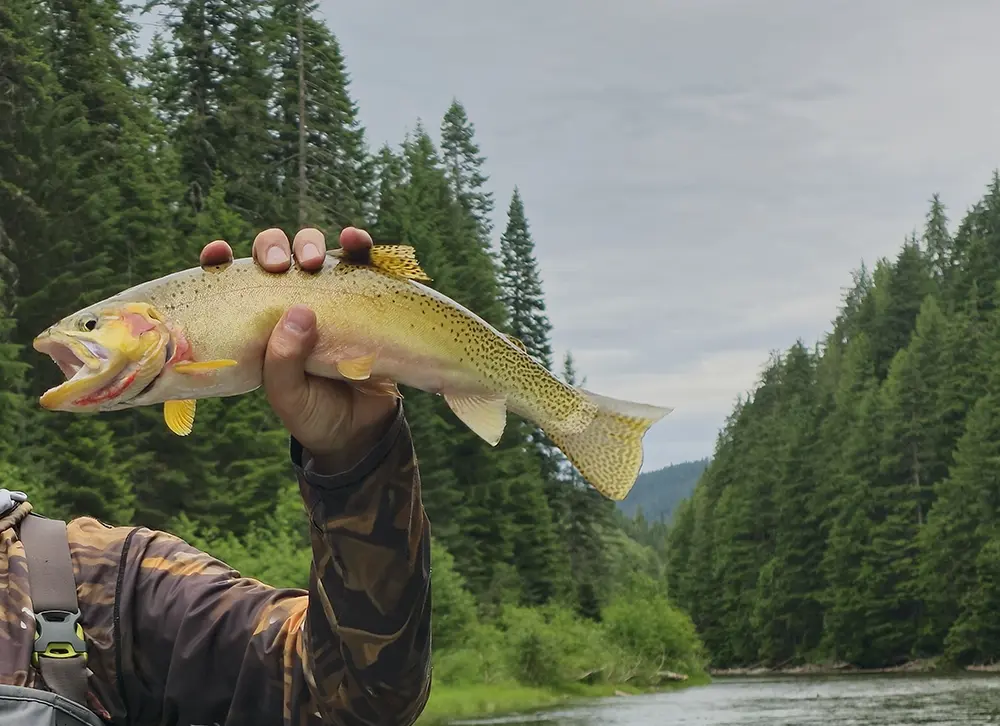
Salmonflies were hooking West Slope Cutthroats on this day.
Gearing Up: Effective Fly Patterns and Equipment
Successful fly fishing during the salmon fly hatch requires a shift in tactics and a selection of gear tailored to the larger-than-life insects. Here’s what you need to know:
Rods and Reels for Big Water
When I hit a river expecting to throw large salmon fly patterns, like the famous “Chonkers” or any of the other large dry fly patterns commonly used during the hatch, my go-to setup is a Prestige 9′ 6-weight fly rod. A good quality fly rod and reel is essential for casting those hefty salmon fly patterns effectively and battling strong river currents. The longer length gives you that extra reach, while the moderate action helps deliver the fly gently. If you’re after more accuracy than raw power when casting those bulky flies, a weight forward Spectre Presentation Fly Line could be your secret weapon.
Fly Lines and Leaders
Opt for a weight-forward floating fly line with a short, powerful front taper to handle large dries and achieve long casts with ease. I’ve found that a weight-forward floating fly line with a shorter, fatter taper like the Spectre Presentation Fly Line, casts heavier bugs far more effectively. I pair this setup with an Snowbee leader and Camo Tippet in the 9-foot floating. These polyleaders come equipped with a tippet ring at the end, simplifying leader construction. If you prefer to tie your own, a 9-foot leader tapered to 3X or 4X should do the trick, depending on water clarity.
Effective Fly Patterns for Salmonflies and More
Matching the hatch is key, and choosing the right flies can make or break your salmon fly fishing adventure. Stock your fly box with an assortment of salmon fly dries, like the Sofa Pillow, Improved Sofa Pillow (Pat Barnes pattern) a favorite, or the newer Tidewater Fly Foam patterns, in sizes 4-8 to imitate the adult insects. Don’t neglect nymph patterns, as trout often feed heavily on nymphs prior to and even during the hatch. Consider using a Golden Stone, Pat’s Rubberlegs, or Kaufmann’s Stonefly in sizes 6-10. Additionally, having a few Green Drake patterns on hand is wise as their emergence often overlaps with the salmon fly hatch, giving trout an added incentive to gorge themselves.
FAQs About the Life Cycle of Salmonflies and Where to Fly Fish With Them
What do salmon flies eat?
They primarily feed on decomposing organic matter like leaves and algae. They’re important recyclers in their ecosystems. While salmon flies themselves aren’t carnivorous, they can and do eat smaller aquatic insects during their developmental nymph stage, which contributes to their impressive size.
What water temperature do salmon flies hatch?
The ideal water temperature for the salmon fly hatch typically sits around 50 degrees Fahrenheit. Warmer temperatures usually signal the beginning of the hatch upstream.
Conclusion of Life Cycle of Salmonflies
The annual spectacle of a salmon fly hatch isn’t just an event, it’s an experience. It’s a testament to the intricate connections within a river’s ecosystem and the captivating sport of fly fishing. Those who understand the life cycle of the salmon fly and use that knowledge to plan their trips will be rewarded with epic fights, gorgeous scenery, and memories that will last a lifetime. Get out there and experience it for yourself.

